
Introduction
- Subject:
- Educational Technology
- Material Type:
- Lecture
- Lesson
- Author:
- Jonathan Kovilpillai
- Date Added:
- 01/21/2024

Introduction
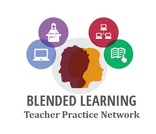
Are we teaching what we think we are teaching?""Are students learning what they are supposed to be learning?""Is there a way to teach the subject better, therefore promoting better learning?"In problem based learning, assessment needs to not only reflect the learning process but the content being learned as well.This online learning module will explore the following learning targets: •Identify how formative and summative classroom assessments are integral to instruction.•Recognize and develop high-quality performance assessments for evaluating student work.•Recognize and develop high-quality rubrics for evaluating student work.

Are we teaching what we think we are teaching?""Are students learning what they are supposed to be learning?""Is there a way to teach the subject better, therefore promoting better learning?"In problem based learning, assessment needs to not only reflect the learning process but the content being learned as well.This online learning module will explore the following learning targets: •Identify how formative and summative classroom assessments are integral to instruction.•Recognize and develop high-quality performance assessments for evaluating student work.•Recognize and develop high-quality rubrics for evaluating student work.

Background: We are providing PD on differentiation. Day two is centered around using tech tools to differentiate. We will be exploring three tech tools for this PD (Jamboard, Adobe Spark, and Canva). The see-think-wonder strategy will be repeated to explore each of these tools separately. They will be building off of day one PD where they identified gaps in their units where they needed to differentiate. When they have worked through the activity for each tool, they should have a list of differentiation ideas that can be used to fill the gaps they had identified previously.
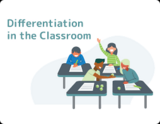
Background: We are providing PD on differentiation. Day two is centered around using tech tools to differentiate. We will be exploring three tech tools for this PD (Jamboard, Adobe Spark, and Canva). The see-think-wonder strategy will be repeated to explore each of these tools separately. They will be building off of day one PD where they identified gaps in their units where they needed to differentiate. When they have worked through the activity for each tool, they should have a list of differentiation ideas that can be used to fill the gaps they had identified previously.
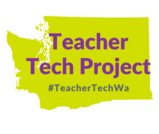
Differentiation in the Online Classroom is an interactive synchronous training for teachers. It explains why providing content appropriate for every individual is vital to students' success. This module provides ideas and methods for how to meet each students' needs.
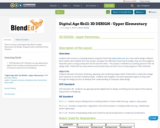
This is a lesson using Digital Age Skills in Upper Elementary 3D Design.
Original Author: Brandon Horst, Chadron
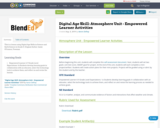
This is a lesson using Digital Age Skills in Science and Earth Science in Grade 8.
Original Author: Jamie O'Connor, Freeman

Students will create an Adobe Spark to demonstrate the cell cycle and mitosis. Students take pictures of hand signals to model the cell cycle and mitosis, creating a digital storybook of the stages, with short descriptions of each stage. Students also add a section about abnormal cell cycles and cancer, with a specific example named and described. Students use Adobe Spark to link the stages of the cell cycle together and animate the process, simplifying the concepts to make them easier to remember.
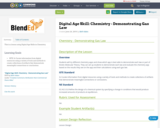
This is a lesson using Digital Age Skills in Chemistry.
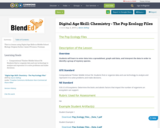
This is a lesson using Digital Age Skills in Middle School Biology.
Original Author: Jamie O'Connor, Freeman
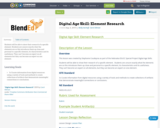
Students will be able to show their research of a specific element. Students are unsure exactly what the elements are so this introduces them up close and personal to a specific element, its characteristics and its usefulness. They can’t become an expert on all elements but they can become an expert on one element.
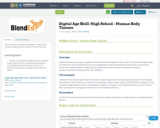
This is a lesson using Digital Age Skills in High School Anatomy.
Original Author: Jamie O'Connor, Freeman
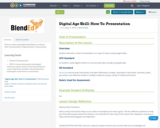
This is a lesson using Digital Age Skills in creating a How To presentation.
Originial Author: Tessa Janssen
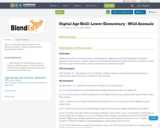
This is a lesson using Digital Age Skills Lower Elementary Science - Animals.
Original Author: Brandon Horst, Chadron
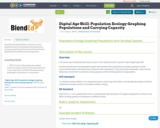
Population Ecology. Students will discover how populations grow and maintain their populations (carrying capacity) and how environmental factors (limiting factors) influence their population.

This is a lesson using Digital Age Skills in Trigonometry.
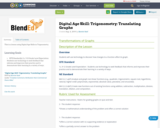
This is a lesson using Digital Age Skills in Trigonometry.
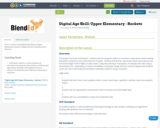
This is a lesson using Digital Age Skills in Upper Elementary Science.
Original Author: Brandon Horst, Chadron

This resource was created by Brandon Horst in collaboration with Tina Williams as part of the 2019-20 ESU-NDE Digital Age Pedagogy Project. Educators worked with coaches to create Lesson Plans promoting both content area and digital age skills. This Lesson Plan is designed for K-4 Technology/Language Arts.